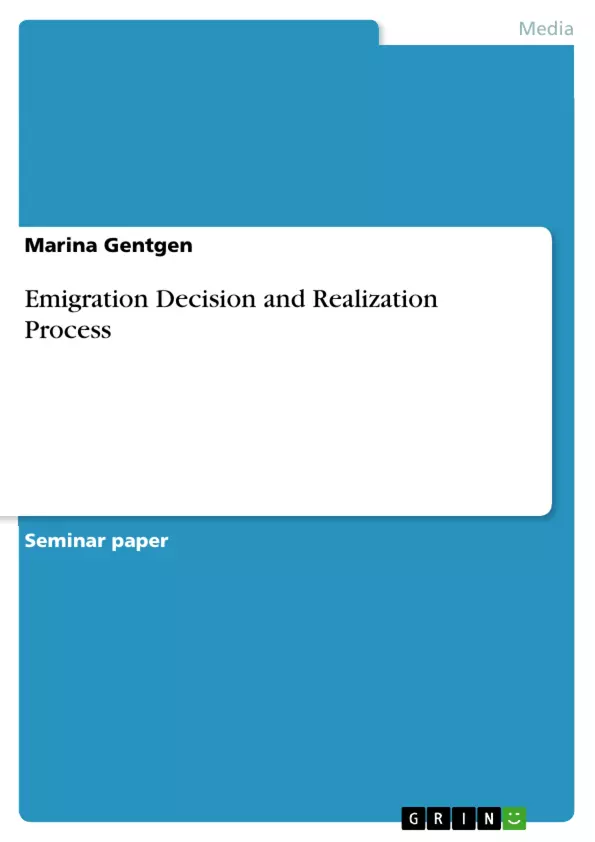This term paper will focus on how to make the decision to leave one's homeland to settle down elsewhere and how this can be realized successfully. The aim is to assist people with a free desire to set up a new existence abroad by finding out if emigration is the solution for them and with an summary of important information for the emigration and the integration in the new country. Therefore, some general scientifically based information around emigration are given at the beginning to form a fundamental understanding. After this basic introduction follows the first main part, the decision making. The mechanics of decision making in general as well as the opportunities and risks for emigrants will be addressed. Afterwards follows the praxis orientated part with elementary questions for the emigration decision by using practical experiences. Furthermore, in the second main part, guidelines to realize an emigration and the necessary arrangements in the home and destination country will be given in the form of a checklist. Finally, the most important results will be summed up and some perspectives about another important emigration population next to the freewills emigrants – the so called "refugees" – will be focused on.
Inhaltsverzeichnis (Table of Contents)
- Introduction
- Problem Statement
- Objective and Structure
- Emigration
- Definition and Meaning of Emigration
- Global Migration Figures and Trends
- Emigration Decision
- Decision Making
- Opportunities and Risks of Emigration
- Fundamental Questions for the Emigration Decision
- Realization Process
- Emigration Process as a Project
- Process in the Home Country
- Process in the Destination Country
- Obstacles for Emigrants
- Conclusion
- Achievement of Objectives
- Perspectives
Zielsetzung und Themenschwerpunkte (Objectives and Key Themes)
This term paper investigates the emigration decision-making process and the practical steps involved in successfully settling in a new country. It aims to provide guidance for individuals considering emigrating, helping them determine if it is the right choice and providing essential information for the emigration and integration process.
- The definition and meaning of emigration
- Global migration figures and trends
- Decision-making factors and considerations for emigration
- Opportunities and risks associated with emigrating
- Practical steps and arrangements for realizing an emigration
Zusammenfassung der Kapitel (Chapter Summaries)
The introduction sets the context for the paper by discussing the increasing prevalence of emigration due to advancements in communication and transportation technology. It also outlines the paper's objective and structure, focusing on assisting individuals with a desire to settle abroad.
Chapter 2 defines emigration and provides a brief overview of global migration figures and trends. It highlights the rapid growth in international migration, particularly in Europe, Asia, and North America.
Chapter 3 delves into the emigration decision-making process, exploring the mechanics of decision making in general. It also analyzes the opportunities and risks associated with emigration, providing a framework for individuals to assess their own situation.
Chapter 4 focuses on the practical aspects of realizing an emigration, presenting a checklist of steps and arrangements necessary for both the home and destination countries.
Schlüsselwörter (Keywords)
The paper revolves around key concepts like emigration, decision-making, global migration trends, opportunities and risks of emigration, practical arrangements for emigration, and integration into a new country.
- Citation du texte
- Marina Gentgen (Auteur), 2016, Emigration Decision and Realization Process, Munich, GRIN Verlag, https://www.grin.com/document/458024



